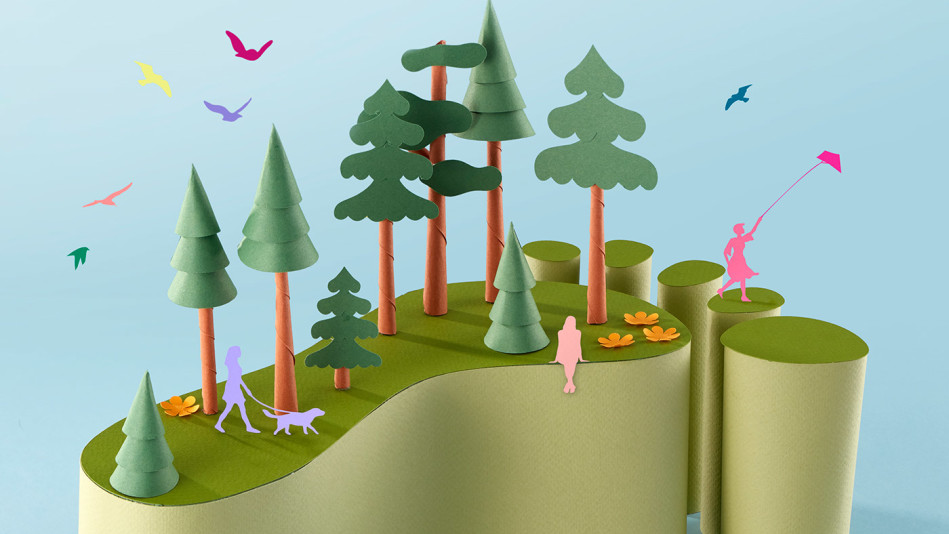5 Facts About Climate Change That Will Help You Sleep Better Tonight
Yes, we need to get serious about caring for Mother Earth—and quick. But let's not overlook some very exciting developments in our planet's prognosis.

Photo: Adrian & Gidi
On the Hole
The ozone layer is repairing itself. After scientists identified the atmosphere-obliterating effects of aerosols containing chlorofluorocarbons (CFCs) and helped institute the Montreal Protocol banning them—back in 1987, when we were all using tons of hairspray—we quit the cans and made a big impact: 1.7 million square miles big, in fact. That's how much the hole over the Antarctic shrank between 2000 and 2015.
It's What's for Dinner
While faux meat was once considered fringe, plant-based food substitutes are gaining ground—they're now a $3.1 billion industry (projected to swell to $5.2 billion globally by 2020). For people who care about climate change, these proteins can't go mainstream soon enough: Animal agriculture may account for up to 51 percent of global warming–causing greenhouse gas emissions, and it takes nearly 2,000 gallons of precious water to raise a single pound of beef.
Get Your Motor Chargin'
Every major car company has now committed to adding an electric model to its fleet, and Volvo and Jaguar Range Rover have vowed to stop designing fossil-fuel-only cars by 2020. Meanwhile, Tesla is delivering an affordable electric vehicle (since its sleek Model S, starting at $74,500, isn't exactly a realistic alternative to the family minivan). And 2018 research by the Boston Consulting Group projects that by 2030, a full 48 percent of new car sales will be electric or hybrid models.
Up and Atom
A Vancouver lab believes it's solved the nuclear fusion puzzle. Translation: Researchers have found a way to generate energy with only helium as a by- product—instead of, say, carbon dioxide or radioactive nuclear waste. (All that's required is a spaceshiplike apparatus the size of a double-decker bus, the inside of which gets 10 times as hot as the center of the sun. No big deal.) The company pursuing the research, General Fusion, is backed by Amazon founder Jeff Bezos—and while the endeavor is still in the exploratory stage, some scientists believe it could power the grid within a decade.
Branching Out
Trees are evolving to offset carbon emissions. A September 2017 study revealed that these leafy geniuses are adapting to the world's higher concentration of carbon dioxide by using water more efficiently, which allows them to increase in size—which means they can remove more CO2 from the air. Thanks, trees!
The ozone layer is repairing itself. After scientists identified the atmosphere-obliterating effects of aerosols containing chlorofluorocarbons (CFCs) and helped institute the Montreal Protocol banning them—back in 1987, when we were all using tons of hairspray—we quit the cans and made a big impact: 1.7 million square miles big, in fact. That's how much the hole over the Antarctic shrank between 2000 and 2015.
It's What's for Dinner
While faux meat was once considered fringe, plant-based food substitutes are gaining ground—they're now a $3.1 billion industry (projected to swell to $5.2 billion globally by 2020). For people who care about climate change, these proteins can't go mainstream soon enough: Animal agriculture may account for up to 51 percent of global warming–causing greenhouse gas emissions, and it takes nearly 2,000 gallons of precious water to raise a single pound of beef.
Get Your Motor Chargin'
Every major car company has now committed to adding an electric model to its fleet, and Volvo and Jaguar Range Rover have vowed to stop designing fossil-fuel-only cars by 2020. Meanwhile, Tesla is delivering an affordable electric vehicle (since its sleek Model S, starting at $74,500, isn't exactly a realistic alternative to the family minivan). And 2018 research by the Boston Consulting Group projects that by 2030, a full 48 percent of new car sales will be electric or hybrid models.
Up and Atom
A Vancouver lab believes it's solved the nuclear fusion puzzle. Translation: Researchers have found a way to generate energy with only helium as a by- product—instead of, say, carbon dioxide or radioactive nuclear waste. (All that's required is a spaceshiplike apparatus the size of a double-decker bus, the inside of which gets 10 times as hot as the center of the sun. No big deal.) The company pursuing the research, General Fusion, is backed by Amazon founder Jeff Bezos—and while the endeavor is still in the exploratory stage, some scientists believe it could power the grid within a decade.
Branching Out
Trees are evolving to offset carbon emissions. A September 2017 study revealed that these leafy geniuses are adapting to the world's higher concentration of carbon dioxide by using water more efficiently, which allows them to increase in size—which means they can remove more CO2 from the air. Thanks, trees!



